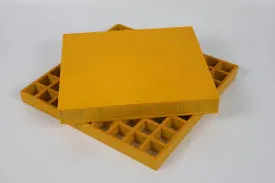
-
 Afrikaans
Afrikaans -
 Albanian
Albanian -
 Amharic
Amharic -
 Arabic
Arabic -
 Armenian
Armenian -
 Azerbaijani
Azerbaijani -
 Basque
Basque -
 Belarusian
Belarusian -
 Bengali
Bengali -
 Bosnian
Bosnian -
 Bulgarian
Bulgarian -
 Catalan
Catalan -
 Cebuano
Cebuano -
 China
China -
 China (Taiwan)
China (Taiwan) -
 Corsican
Corsican -
 Croatian
Croatian -
 Czech
Czech -
 Danish
Danish -
 Dutch
Dutch -
 English
English -
 Esperanto
Esperanto -
 Estonian
Estonian -
 Finnish
Finnish -
 French
French -
 Frisian
Frisian -
 Galician
Galician -
 Georgian
Georgian -
 German
German -
 Greek
Greek -
 Gujarati
Gujarati -
 Haitian Creole
Haitian Creole -
 hausa
hausa -
 hawaiian
hawaiian -
 Hebrew
Hebrew -
 Hindi
Hindi -
 Miao
Miao -
 Hungarian
Hungarian -
 Icelandic
Icelandic -
 igbo
igbo -
 Indonesian
Indonesian -
 irish
irish -
 Italian
Italian -
 Japanese
Japanese -
 Javanese
Javanese -
 Kannada
Kannada -
 kazakh
kazakh -
 Khmer
Khmer -
 Rwandese
Rwandese -
 Korean
Korean -
 Kurdish
Kurdish -
 Kyrgyz
Kyrgyz -
 Lao
Lao -
 Latin
Latin -
 Latvian
Latvian -
 Lithuanian
Lithuanian -
 Luxembourgish
Luxembourgish -
 Macedonian
Macedonian -
 Malgashi
Malgashi -
 Malay
Malay -
 Malayalam
Malayalam -
 Maltese
Maltese -
 Maori
Maori -
 Marathi
Marathi -
 Mongolian
Mongolian -
 Myanmar
Myanmar -
 Nepali
Nepali -
 Norwegian
Norwegian -
 Norwegian
Norwegian -
 Occitan
Occitan -
 Pashto
Pashto -
 Persian
Persian -
 Polish
Polish -
 Portuguese
Portuguese -
 Punjabi
Punjabi -
 Romanian
Romanian -
 Russian
Russian -
 Samoan
Samoan -
 Scottish Gaelic
Scottish Gaelic -
 Serbian
Serbian -
 Sesotho
Sesotho -
 Shona
Shona -
 Sindhi
Sindhi -
 Sinhala
Sinhala -
 Slovak
Slovak -
 Slovenian
Slovenian -
 Somali
Somali -
 Spanish
Spanish -
 Sundanese
Sundanese -
 Swahili
Swahili -
 Swedish
Swedish -
 Tagalog
Tagalog -
 Tajik
Tajik -
 Tamil
Tamil -
 Tatar
Tatar -
 Telugu
Telugu -
 Thai
Thai -
 Turkish
Turkish -
 Turkmen
Turkmen -
 Ukrainian
Ukrainian -
 Urdu
Urdu -
 Uighur
Uighur -
 Uzbek
Uzbek -
 Vietnamese
Vietnamese -
 Welsh
Welsh -
 Bantu
Bantu -
 Yiddish
Yiddish -
 Yoruba
Yoruba -
 Zulu
Zulu
grp fan
The Evolution and Impact of GRP (Glass Reinforced Plastic) in Various Industries
In recent years, materials innovation has played a crucial role in the evolution of various industries. One of the most remarkable advancements is the use of Glass Reinforced Plastic (GRP), often referred to as fiberglass. This versatile composite material, which combines plastic with glass fibers, has revolutionized sectors ranging from construction to automotive and marine design.
Understanding GRP Composition and Properties
GRP is composed of a polymer matrix reinforced with glass fibers, which significantly enhance its strength, durability, and resistance to environmental factors. The polymer base provides flexibility and ease of molding, while the glass fiber reinforces the composite, making it lighter and stronger than traditional materials like steel or wood. The resulting product is a lightweight, corrosion-resistant, and highly durable material that can withstand harsh conditions, making it ideal for a variety of applications.
One of GRP's standout features is its excellent strength-to-weight ratio. This property allows manufacturers to produce components that are both lightweight and strong, leading to efficiencies in transportation and construction. Additionally, GRP can be molded into complex shapes, enabling innovative designs that were previously difficult to achieve with conventional materials.
Applications of GRP in Various Industries
1. Construction
In the construction industry, GRP has gained popularity for its application in structural components, roofing systems, and wall panels. Its resistance to moisture and chemicals makes it an excellent choice for environments susceptible to corrosion. Moreover, GRP can be used in lightweight structures, which reduces the load on foundations and supports, potentially lowering building costs. The design flexibility also allows for aesthetic finishes that can enhance visual appeal without compromising durability.
2. Marine Industry
The marine sector was one of the first to embrace GRP due to its lightweight and corrosion-resistant characteristics. Fiberglass boats, for instance, offer superior performance compared to their wooden and metal counterparts. They are less susceptible to rot and can better withstand the effects of saltwater. GRP is also used in the construction of marine components such as hulls, decks, and storage facilities, contributing to the longevity and efficiency of vessels.
grp fan

3. Automotive Engineering
The automotive industry has seen a significant adoption of GRP for manufacturing vehicle components, such as body panels, bumpers, and interior parts. The lightweight nature of GRP contributes to better fuel efficiency and reduced emissions. Additionally, it allows for more creative and aerodynamic vehicle designs. As electric vehicles become more prevalent, the demand for lightweight materials like GRP is expected to increase, aiding in the drive towards sustainability.
4
. Energy SectorThe renewable energy sector, particularly in wind turbine manufacturing, increasingly utilizes GRP for constructing turbine blades. The material’s lightweight properties help improve energy efficiency while minimizing the structural requirements. Wind turbine blades made of GRP are not only stronger and lighter but also offer greater resistance to the environmental challenges of wind farming.
Environmental Considerations and Future Trends
Despite its many advantages, GRP does have environmental implications. The production of fiberglass involves energy-intensive processes, and disposal poses challenges due to its durability, which can prevent decomposition. However, advancements in recycling technologies and the development of bio-based resins are paving the way for more sustainable practices in the GRP industry.
Looking forward, the future of GRP appears promising. Research is ongoing to improve its properties and applications, such as incorporating smart technologies into GRP composites. Innovations like self-healing materials and integration with sensors could further enhance GRP's functionality in various applications.
Conclusion
The rise of Glass Reinforced Plastic has marked a significant turning point across multiple industries. Its unique combination of strength, lightweight properties, and versatility makes it a preferred choice for modern manufacturing. As industries continue to innovate and seek sustainable solutions, GRP is likely to remain at the forefront of material science, driving advancements that shape our built environment and technologies for years to come.









